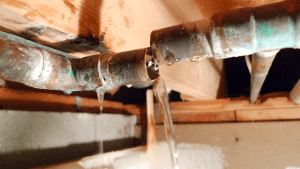Just how to Examine If Your Home Has a Concealed Leakage
Just how to Examine If Your Home Has a Concealed Leakage
Blog Article
Everybody has got his or her own theory involving Hacks to detect leaks.

Early detection of dripping water lines can minimize a prospective catastrophe. Apart from conserving you cash, it will decrease the stress and also frustration. The moment you discover a leakage, calling your plumber for repair work is the very best remedy. Nonetheless, some little water leaks may not show up. Here are some hacks that assist if you can not find it with your naked eyes.
1. Take A Look At the Water Meter
Examining it is a proven means that assists you uncover leaks. If it moves, that suggests a fast-moving leakage. This implies you might have a slow leak that can even be below ground.
2. Check Water Usage
Analyze your water costs and also track your water intake. As the one paying it, you ought to notice if there are any kind of inconsistencies. If you find sudden changes, in spite of your intake being the same, it indicates that you have leakages in your plumbing system. Bear in mind, your water expense must drop under the same range each month. An abrupt spike in your costs shows a fast-moving leakage.
Meanwhile, a consistent rise every month, despite having the exact same habits, reveals you have a slow leak that's additionally gradually intensifying. Call a plumber to completely inspect your property, especially if you really feel a cozy area on your flooring with piping beneath.
3. Do a Food Coloring Examination
When it concerns water intake, 30% comes from toilets. Test to see if they are running properly. Decrease specks of food shade in the tank and wait 10 mins. There's a leak in between the tank as well as bowl if the color in some way infiltrates your bowl during that time without flushing.
4. Asses Exterior Lines
Don't forget to inspect your outdoor water lines also. Must water leak out of the connection, you have a loose rubber gasket. One small leak can throw away bunches of water and also spike your water costs.
5. Evaluate the scenario and also evaluate
Homeowners should make it a practice to check under the sink counters as well as also inside closets for any kind of bad odor or mold growth. These two warnings indicate a leak so punctual attention is needed. Doing routine examinations, also bi-annually, can save you from a major issue.
Check for stainings and compromising as the majority of appliances as well as pipes have a life expectations. If you think leaking water lines in your plumbing system, don't wait for it to rise.
Early discovery of leaking water lines can reduce a potential disaster. Some tiny water leakages may not be visible. Inspecting it is a proven method that assists you find leakages. One little leak can squander bunches of water and surge your water expense.
If you suspect leaking water lines in your plumbing system, do not wait for it to intensify.
WARNING SIGNS OF WATER LEAKAGE BEHIND THE WALL
PERSISTENT MUSTY ODORS
As water slowly drips from a leaky pipe inside the wall, flooring and sheetrock stay damp and develop an odor similar to wet cardboard. It generates a musty smell that can help you find hidden leaks.
MOLD IN UNUSUAL AREAS
Mold usually grows in wet areas like kitchens, baths and laundry rooms. If you spot the stuff on walls or baseboards in other rooms of the house, it’s a good indicator of undetected water leaks.
STAINS THAT GROW
When mold thrives around a leaky pipe, it sometimes takes hold on the inside surface of the affected wall. A growing stain on otherwise clean sheetrock is often your sign of a hidden plumbing problem.
PEELING OR BUBBLING WALLPAPER / PAINT
This clue is easy to miss in rooms that don’t get much use. When you see wallpaper separating along seams or paint bubbling or flaking off the wall, blame sheetrock that stays wet because of an undetected leak.
BUCKLED CEILINGS AND STAINED FLOORS
If ceilings or floors in bathrooms, kitchens or laundry areas develop structural problems, don’t rule out constant damp inside the walls. Wet sheetrock can affect adjacent framing, flooring and ceilings.
https://www.servicemasterbyzaba.com/blog/how-to-detect-water-leakage-in-walls/

As an avid reader about Finding hidden leaks, I thought sharing that excerpt was a good thing. Liked our content? Please share it. Let somebody else discover it. I praise you for your time. Please stop by our website back soon.
Report this page